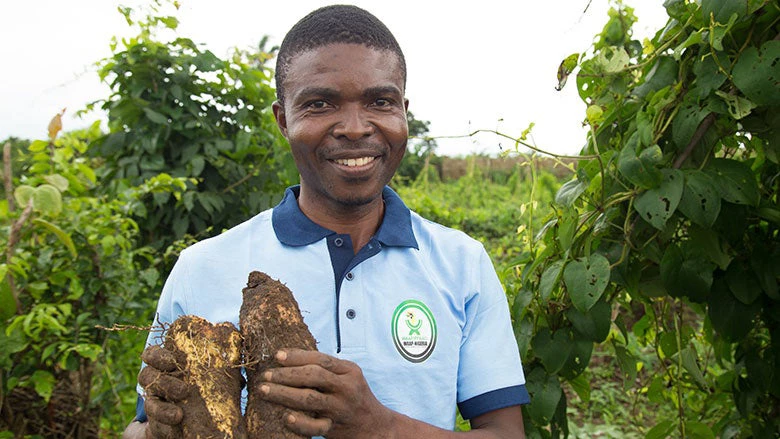
For too long the narrative surrounding Africa’s agri-food sector has been one of limited opportunity, flat yields and small farms. It’s true that Africa is still producing too little food and value-added products despite recent efforts to increase investment, and that agricultural productivity has been broadly stagnant since the 1980s as shown in the 2018 African Agriculture Status Report.
At the same time, climate change impacts mean that food insecurity is becoming a bigger challenge, especially in hot spots such as the Sahel, the Great Lakes region, and the Horn of Africa. But we’re also seeing evidence of agricultural transformation due to rising food demand, increased urbanization of the continent and an emerging middle-class in search of new investment opportunities. Some of the transformative trends I’m especially excited about include: rapid growth in per-capita income in Sub-Saharan Africa, Africa’s agricultural growth rate averaging out to an impressive 4.6% between 2000-2017, the rise of commercially-oriented African investor farmers who are entrepreneurial, educated and capitalized, and more investment by African entrepreneurs into agricultural value chains.
But these trends could be scaled up for a wider impact. So, what’s the Word Bank doing to advance agricultural transformation in Africa?
Here are three examples that I want to share with you:
The generation, dissemination and adoption of improved seeds across West Africa through the West Africa Agricultural Productivity Program (WAAPP).
The relatively small size of African countries prevented economies of scale in agricultural research to develop improved crop varieties and share them across borders to boost agricultural productivity. The WAAPP developed National Centers of Specialization to focus research on specific commodities such as maize and aquaculture, and harmonized regulations to facilitate the movement of improved crop varieties across borders. After starting in just three countries, the project has been expanded to 13 countries. The results speak volumes about the power of scaling up. WAAPP has benefited about nine million beneficiaries on about 4.8 million hectares of land with about 200 improved technologies adopted. Average incomes have increased by more than 30%, and more than 1,000 young scientists were awarded scholarships for master’s and PhD degrees.
Linking farmers to markets through productive alliances
A key challenge in agriculture is how to better link farmers to markets. One solution? The productive alliances approach, which strengthens the links between producers, buyers, and the public sector. A productive alliance involves a group of smallholder producers, one or more buyers, and the public sector. These agents are connected through a business plan which allow them to upgrade their production capacities and skills and strengthen their links with the buyers.
The productive alliance approach has proved sufficiently flexible to adjust to a wide range of market realities. The approach was initially tested in Colombia before being scaled up across Latin America to support 21 projects in 10 countries: Bolivia, Brazil, Colombia, Guatemala, Haiti, Honduras, Jamaica, Mexico, Panama, and Peru. This approach is now being scaled up in Asia and Africa. Productive alliances are benefiting families in Mali and Sierra Leone too.
Raising agricultural productivity, improving resilience, and reducing greenhouse gas emission through Climate-Smart Agriculture (CSA)
There’s no doubt that Africa needs a more climate-smart food system that improves agricultural productivity, has greater resilience to climate change and lowers greenhouse gas emissions. The Bank has been scaling-up support for climate-smart agriculture by supporting coalitions for broad-scale action, conducting analytical work in partnership with others, and in operational support to countries. The Bank is working with CGIAR, the world’s largest global agricultural innovation network, to develop climate-smart profiles that provide an overview of the climate-smartness of countries such as Kenya, Rwanda and Uganda, identifying good practices and potential for improvement. In addition, we’re helping several countries prepare climate-smart investment plans. Also, all our projects are screened for climate risks, account for greenhouse gas impacts and are reviewed for opportunities to incorporate climate-smart actions. In fiscal year 2018, 45% of our agriculture lending had climate adaptation and mitigation co-benefits.
What are the key aspects to scaling-up across these examples? Here’s what we’ve learned. First, to better understand opportunities for scaling up, it’s crucial to conduct a systematic screening during project design to ensure that both opportunities and risks are well-integrated into a project, and that a path for scaling up is mapped out. Second, the phasing approach, as in the case of the WAAPP, which was implemented in multiple phases, is a way to systematically scale up initiatives across countries in a sustainable way. A third and related point is the importance of adjusting any efforts to scale up based on lessons learned and recognizing that ‘one size doesn’t fit all’--as in the case of the productive alliances, where programs were adapted and customized to local realities to be more effective.
Finally, no one can do it alone. Partnerships, particularly with CGIAR, coalitions like the CSA alliance and private sector actors, were critical in all cases.


Join the Conversation